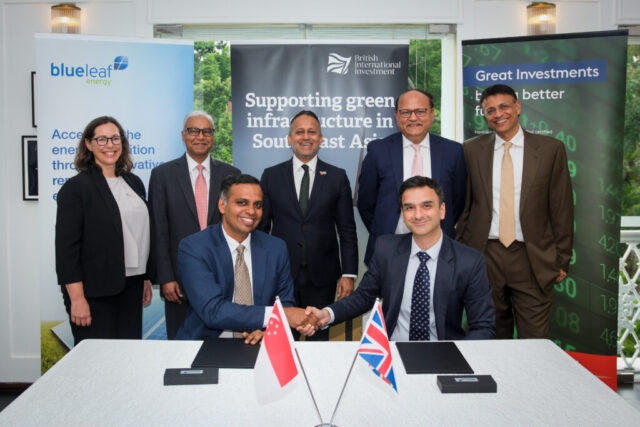Although blended finance is on everyone’s lips, deal flow and transaction sizes dropped sharply in 2020, a new Convergence report finds. The industry tracker makes recommendations on how to achieve scale.

“We’re into the last decade of the 2030 agenda and we are nowhere near the trillions we will need to achieve it,” said Joan Larrea, CEO of Convergence.
“The time to scale is now. Blended finance isn’t a silver bullet, it’s a tool, and it’s time we started using it,” said Larrea during a conference call discussing the findings and recommendations in her organisation’s latest report ‘The State of Blended Finance 2021’.
Convergence, which tracks blended finance deals that have at least one private investor, can claim it has the ‘largest depository of blended finance data globally’. It said it has tracked $160bn in blended finance deals over the past decade.
In 2020, deal flows decreased significantly to around $4.5bn, 50% less than in 2019. Funding was diverted to pandemic relief to existing partners and programs and deal sizes were smaller.
For 2021, Convergence expects to capture only around 33 deals, a marked fall from the annual average of around 55 transactions. Over the past five years, blended finance flows have averaged around $9bn per year.
Keep it simple
Convergence has identified four key challenges to achieving scale and it formulated corresponding recommendations. One of the main hurdles, according to the organisation, is the fact that donors who are the main source of the catalytic funding to mobilise private investment, have not prioritised and budgeted for private sector mobilisation.
Convergence recommends that “donors should make private sector mobilisation an essential pillar of their strategy.” It calls on multilateral development banks and development finance institutions “to engage with institutional investors on a radically different scale.”
“You have to make the structure really simple,” said Rael McNally, Senior Portfolio Manager Global Renewable Power at BlackRock. “You ask institutional investors to go out of their comfort zone. We showed them how it can work for their portfolio.”
McNally is involved with Blackrock’s Climate Finance Partnership (CPF), a flagship blended finance vehicle focused on investing in climate infrastructure in emerging markets. The fund manager announced on the third day of COP26, 2 November, the CPF’s fundraising closed, raising $637mn from a consortium of global institutional investors, governments and philanthropies. The fund had originally targeted to close at $500mn.
Blackrock’s portfolio manager believes that ‘distinct risk selling’ – different risk categories for investors with different risk/return profiles – was not practical. Institutional investors are looking for a structure that is familiar to them, he said, acknowledging the need for broader market education because the different types of investors don’t speak each other’s languages.
Need for more and larger-scale funds
Other challenges to scaling up are a lack of transparency around deals – what are the financial terms and achieved development outcomes – insufficient participation and coordination from developing country governments, and an underdeveloped ecosystem for blended finance.
There are not enough intermediaries, i.e. investment funds that can channel the large amounts of capital from donors and investors that are earmarked to be invested in opportunities aligned with the Sustainable Development Goals.
“SDG projects are often small, and there are limited intermediaries in the market equipped to channel these flows,” the report said. “There is a need for more transactions that are at least $100mn in size.”
Trends
A few trends are worth noting. Funds continue to be the most common blended structure with 35% of all transactions in 2020. Private equity funds gained significant momentum last year, 47% of all blended funds recorded were private equity vehicles (36% in 2018).
There is also a notable increase in the number of blended companies and corporates, representing over 35% of deals in 2020 (compared to 11% between 2015-17).
Sub-Saharan Africa (SSA) continues to be the most common destination for blended finance flows with almost two-thirds of blended finance transactions in 2020, which represented a significant increase compared to previous years.
The top five countries for blended finance by the number of commitments are Kenya (32), India (18), Uganda (18), Nigeria (16) and Ghana (15).
Renewable energy, financial services and agriculture are clearly the most popular sectors, with agriculture gaining increased momentum. Agriculture-focused blended finance transactions comprised 28% of 2020 deals, compared to 16% between 2015-17.
Concessional capital (85% of all transactions) is the most popular blending approach, followed by technical assistance (30%) and risks/guarantees (19%).
Since 2015, project developers and corporates have been the most common direct beneficiary of blended capital. In 2018-20, they were the direct beneficiary of 61% of transactions.
Learn more
Watch here the blended finance panel during the launch of Impact Investor on 6 October. It’s a ‘crash course’ in blended finance by Nic Wessemius, Director Clients and Investments Solutions at FMO Investment Management, Georges Beukering, Head of Capital Raising Climate Fund Managers and Mark Baak, Director at Privium Fund Management.





